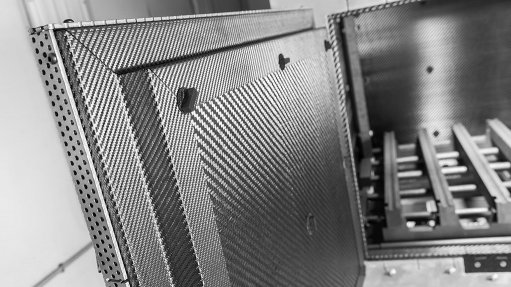
HARD WEAR The insulation cladding in the hot zone of vacuum furnaces must be replaced on a regular basis
Diversified technology-development company, Schunk Carbon Technology, as a producer of materials and components for high-temperature systems, is positioning itself as a service provider for the relining of heating chambers within vacuum services using newly patented carbon fibre reinforced carbon (CFC) solutions.
The company states that the insulation cladding in the hot zone of vacuum furnaces must be replaced on a regular basis, noting that this complete renovation or relining of the heating-chamber, is now offered by Schunk as a high-quality service using CFC components.
“The CFC components increase the temperature-homogeneity and service life of the furnace hot zone considerably, which reduces costly downtime,” Schunk says.
The CFC components are well complemented by other product offerings from Schunk, such as the company’s new replacement insert for thermal elements and its innovative two-level double-L profile for perfect door insulation.
Product manager Thomas Strobel states that Schunk want to improve the functionality of furnaces in close collaboration with its customers.
"The customer can rely on a level of quality which has been continually monitored, precisely documented and standardised. This ensures optimum process reliability," stresses Strobel.
Ceramic Printer
Meanwhile, at this year's Thermprocess trade show, which will take place in Düsseldorf, Germany from June 16 to 20, Schunk will unveil its IntrinSiC – a unique product capable of printing complex three-dimensional (3D) ceramic parts.
The Thermoprocess trade show is a platform for the presentation of highly innovative technology and environmental concepts for industrial thermal processing plants.
Schunk senior product developer Dr Arthur Lynen explains that Schunk has developed a new process where components can be produced from silicon carbide through 3D printing, which was not possible in the past because of their complexity and size.
It enables the trouble-free creation of complex undercuts and hollow spaces for monolithic and large-sized constructional elements using ceramics.
“Thanks to its extreme dimensional stability, IntrinSiC is especially attractive to manufacturers of components which have to exhibit especially high rigidity and strength,” the company says.
Schunk highlights that industry experts have termed the production of complex products with a printer an "industrial revolution”.
Schunk believes that with IntrinSiC, the company has made a breakthrough in this seminal high-tech field adding that this is the first product capable of manufacturing constructional elements made of the ceramic material silicon carbide, which is one of the hardest materials available.